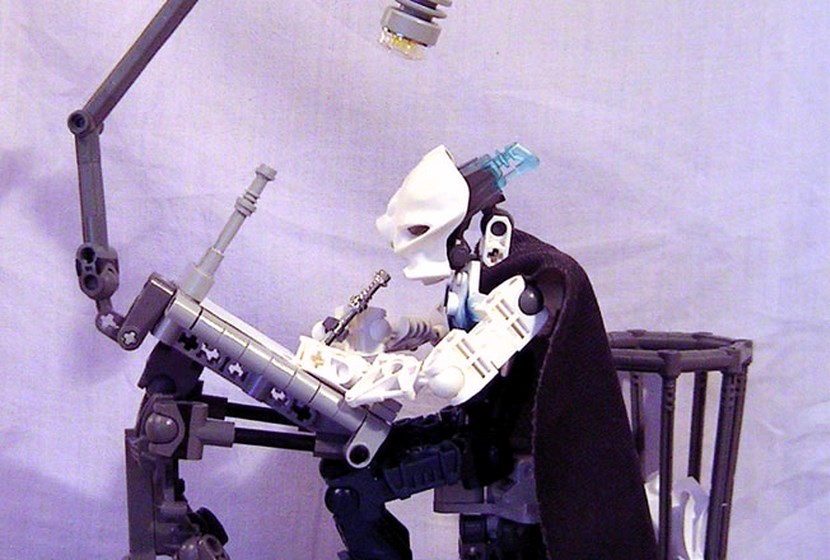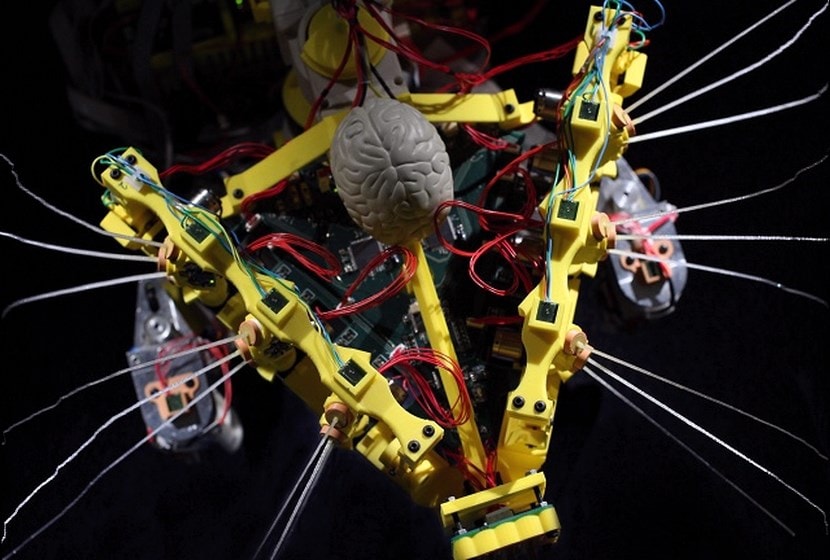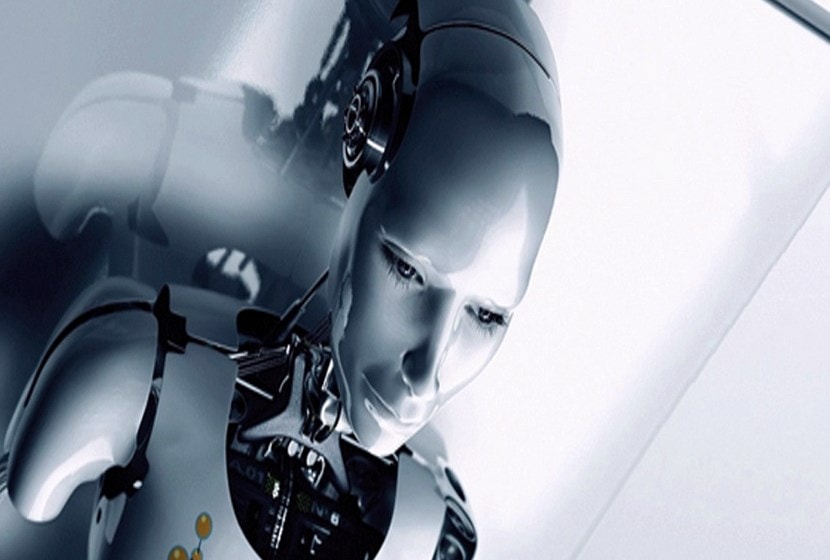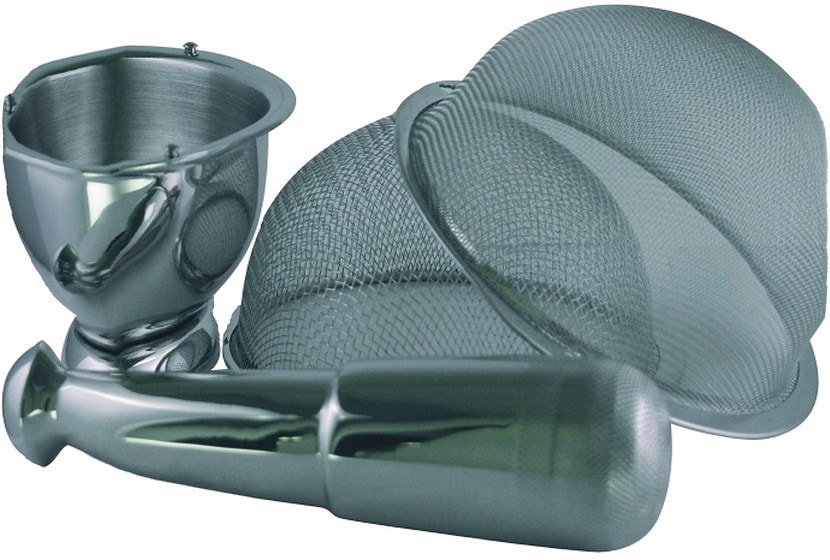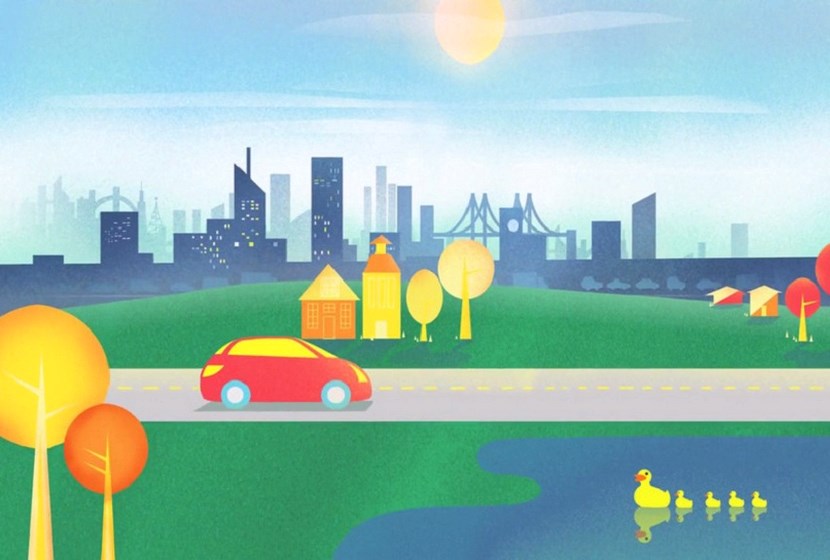From Minitel to mobile Internet, technology has revolutionized our modes of communication in just a few decades. A development that tends to make the boundary between the real world and the virtual world disappear. Futurologist Joël de Rosnay deciphers the stakes of the inescapable fusion between man and machine.
Telex, Minitel, modem... It's hard not to smile when you think of these machines from another age, fossils from the prehistory of the Internet.
In 2010, the man can read the news on his "smartphone" and Montaigne on an electronic tablet. Tomorrow, he won't even have to click a button. Thanks to augmented reality, the corridors of the metro and the facades of monuments will be equipped with sensors and other cutting-edge nanotechnologies to send us information.
Pranav Mistry goes even further. This Indian engineer may have just invented the computer of the future. What's his name? Sixth Sense. According to the researcher at the Massachusetts Institute of Technology, every object around us is a potential interface. To take a picture, for example, all you have to do is frame the image with your fingers. A small device attached to our head and software built into the phone will do the rest.
As discoveries are made, the boundary between material and immaterial will disappear. Computers, digital technology and biotechnologies are forcing their way into our physical world. At the risk of pushing mankind to give up some of its freedom.
Today, unscrupulous computer giants store months of your every search on the Web. Within ten years, RFID (Radio Frequency IDentification) chips placed throughout our environment will make "traceability" one of the great fears of the 21st century. With each new technological advance, the Big Brother spectrum hovers over the horizon. Wrongly so. Ever more intelligent and autonomous, the machine is still a creature of man, not a "human" creature. The threat comes not from technical progress, but from the use that man will make of these new tools.
For the futurologist Joël de Rosnay, thanks to advances in science and technology, we are in the process of shaping a kind of "planetary brain" of which we will be the neurons... The hypothesis may seem dizzying. However, on closer inspection, there is nothing extravagant about it. The fusion between the real world and the virtual world is underway. For better or for worse.
"A Web in symbiosis with our brains and our bodies". The French futurologist is convinced of this. By 2060, man should enter in symbiosis with the planetary brain, the mysterious "cybionte".
U & R In 1975, in The Macroscope, you announced that man would participate in the creation of a planetary brain. Thirty-five years later, has this brain been created?
J. de Rosnay: The planetary brain is under construction. Closer and closer interfaces are being created between man and machine. With the advent of the telephone, television and cinema, man has externalized many of his senses. He has surrounded himself with a cloud of electronic or mechanical prostheses to speak, listen, see and even move around. With digital technology, we are witnessing the convergence of these prostheses. They merge, connect with each other. This is why I prefer to speak of "unimedia" rather than "multimedia". These developments show that we are building a kind of "planetary brain". To symbolize the emergence of this macro-organism, I proposed in the early 1990s the term "cybionte", a contraction of the words cybernetics and biology. The cybionte will promote the emergence of a new man: "the symbiotic man".
What's this "symbiotic man" going to look like?
After Homo sapiens, who seeks to dominate living species, after Homo faber, who masters tools and machines, after Homo economicus, both consumer and predator, symbiotic man will seek to live in harmony, in symbiosis, with the planetary brain he has helped to create. Neither superhuman nor robot, he will be as we are today. Already, he is "subcontracting" to the cybionte under construction what is too fast or too complex for his brain alone, the stock market for example.
The Internet is becoming an increasingly important part of our lives. What will the Web look like by 2050?
The evolution of the Internet-connected computer is comparable to that of the book. For a long time, the latter only existed in the form of large single copies, presented on trestles and attached to the wall. The monks then copied the manuscripts. Then printing led to the creation of the "manual", the book that fits in the hand. Thanks to him, the culture spread very widely. In the same way, in the 1970s, people were connected to an external computer via a telematics terminal. The personal computer was fixed, connected to an electrical outlet and a telecom socket. With the laptop, Internet access became mobile. Nowadays, almost 50 % connections to the Internet are made from smartphones, the multifunctional mobile phones. The real change, which will take place between now and 2030, will be that of the "intelligent environment". Today, there are three flat screens: those of the desktop computer, the laptop and the smartphone. Tomorrow, we will be able to go behind these screens, mirrors of the virtual world. We will find ourselves facing the walls of an amphitheatre, a restaurant or an airport. And these walls will themselves be screens. They will be equipped with RFID chips capable of detecting objects, face identification systems, or motion detectors.
What applications can this intelligent environment have in everyday life?
Clickable" environments and augmented reality offer immense prospects in areas such as marketing, commerce or institutional communication. Smartphones will become extensions of eyes, ears and gestures. Let's take the example of election campaigns. Currently, posters of candidates are often stuck on boards and opponents have fun tagging or tearing them up. Tomorrow, the candidates' photos will be embedded in a metal board with a circular barcode. When the candidate's phone is pointed at the poster, the photo of the candidate will begin to speak to expose his or her program. Just like a TV screen would do. Another example: instant translation. If you're travelling in Russia or China and don't speak the language, simply pointing the name of a sign with your camera will translate the text into your native language immediately. You can imagine an infinite number of applications of this type.
Will man be forced to exploit this intelligent environment?
Of course you don't. People will be able to choose to use only some of the possibilities offered by the intelligent environment. A worker, a surgeon or a soldier may need it as part of their job. But everyone will also be able to use these applications in their leisure or personal lives. It is not impossible that only a few categories of people will make regular use of them. A bit like astronauts or divers today.
How far can the co-evolution of mankind and the new modes of communication and information go?
The personal Web, which connects a person to communicating objects, will gradually become the global Web. The interaction between man and machine will make the connections of the planetary brain more and more dense and branched. If we measure the future evolution of the Internet based on the number of addresses and favourites available on a personal computer or smartphone, we can see that by 2030-2050 a fundamental transition is taking place. This threshold will correspond to the birth of the symbiotic Web or "symbionet". A Web in symbiosis with our body and our brain. We will then transpose, in the network we have created, the very structure of the brain and its three forms of intelligence: connective, collaborative and collective.
How can this symbiotic web be useful to mankind?
The symbiotic Web will become increasingly important in the decisions that involve humanity. A system that looks at itself from the outside, thanks to satellites and sensors, will be able, for example, to regulate in real time the environment in which we live. Nowadays, the arrival of a tornado or tsunami is often detected too late. Thanks to the "senses" that the Earth is developing, it will be possible to manage certain cycles in the ecosystem in real time for the benefit of all. On condition, of course, that human beings manage to enter into symbiosis with the macro-organism they have created.
What abuses threaten the symbiotic man of tomorrow?
The symbiotic man could be dominated by the cybionte, becoming some kind of monster, a super Big Brother. One of the keys to the future will be for man to rely on the scientific approach to better understand where he comes from and what his evolution could be. And not just from the traditional rules of politics, the market or religion. He will also need to understand how complexity has evolved from the origin of life to the present day. And to try to use these same principles to enter into symbiosis with the cybiont, without it destroying human identity. But the risks of drift exist. The worst would be an intrusion into the being without its knowledge. Within 10 to 50 years, it will be technically possible to influence emotions for malevolent purposes. For example, thanks to an invisible and undetectable modification of the immediate environment, it will be possible to stimulate in the brain of a person the secretion of hormones for well-being or pleasure. And thus put this person in a position to promote the signing of an important contract! This risk of misappropriation seems even more serious than the traceability of information, invasion of privacy, hacking, disinformation or censorship, against which we now have means of protection or deterrence.
Will the planetary brain under construction be indestructible?
A virus alone will not be enough to destroy it, nor will a targeted cyber attack. The cybion develops its own immune system. The more complex the system becomes, the stronger its immunity becomes thanks to a digital form of natural selection. To endanger it, several massive, simultaneous and concentrated cyber attacks on large network nodes would be necessary. On the other hand, there is a risk that the global system could become schizophrenic or bipolar. Moreover, some sociologists already consider that the Internet could be affected by mental illness!
You mean this planetary brain will have an autonomous intelligence?
The future of the planetary brain will mostly depend on what we do with it and how we use it. Already it behaves in a semi-autonomous way. It favours the progressive emergence of a collective consciousness, or even a reflective collective coconsciousness. To put it plainly: the system will perhaps become capable of thinking for itself.
So men are creating a new form of God?
Ah, I don't know. You use big words... I'm not in a position to talk about what's behind a system whose neurons are our own! If the system can think for itself: who is it? The question remains open.
Interview by Blaise Mao and Jérôme Ruskin / Interview for the magazine Usbeck and Rica
About Joël de Rosnay:
- Researcher and teacher at the Massachusetts Institute of Technology (MIT), 1967-1971.
- Director of Research Applications at the Pasteur Institute, 1975-1984.
- Scientific columnist at Europe 1, from 1987 to 1995.
- Director of Foresight and Evaluation at the Cité des sciences et de l'industrie de la Villette until 2002.
- Co-founder in 2005 of the citizen journalism site AgoraVox.
- Today, Joël de Rosnay is advisor to the President of the Cité des sciences et de l'industrie La Villette Paris and Executive President of Biotics International, a strategic consulting firm in new technologies.
{just how do we

